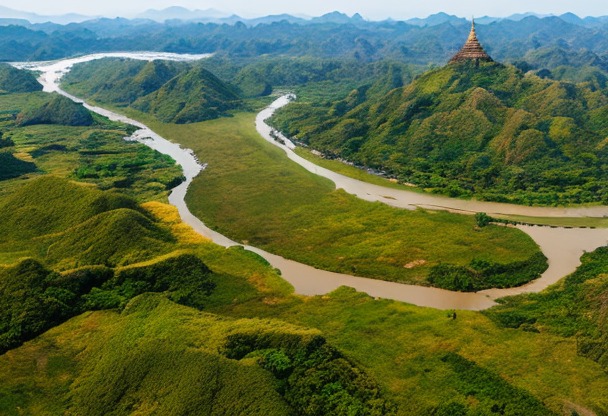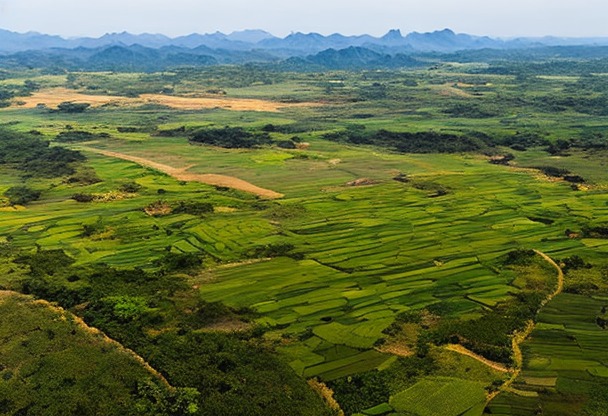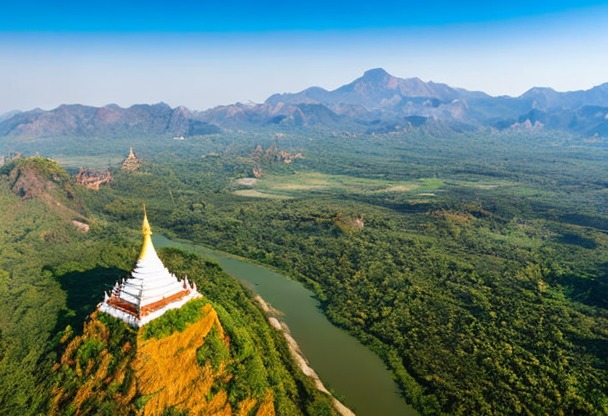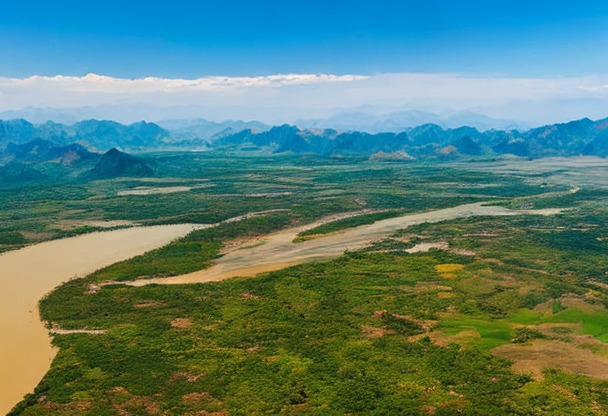WHEN TO TRAVEL TO Myanmar
Choosing the right time for your trip to Myanmar can make all the difference. It's important to consider climatic elements, seasonal events and busy tourist periods to maximize your travel experience.

Location
Climate
The seasons in Burma: climate and low and high seasons
The climate in Burma is tropical, with three main seasons:- Dry season : November to February, with pleasant temperatures and little rainfall.
- Warm season : March to May, with high temperatures of up to 40°C and high humidity.
- The rainy season: June to October, with frequent and sometimes heavy rainfall.
Major cultural events
Throughout the year, many cultural and religious events take place in Burma. Here are some of the most important:Thingyan (Water Festival)
Celebrated in April, Thingyan is the Burmese New Year and also marks the end of the dry season. The festivities last several days and include processions, concerts and the "throwing" of water to purify oneself and welcome in the new year. It's a unique opportunity to discover the local culture and join in the celebrations with the locals.Thadingyut (Festival of Lights)
In October, Thadingyut celebrates the end of the rainy season with a dazzling festival of lights. Houses, temples and streets are lit up with thousands of lanterns and candles, creating a magical atmosphere. Dance performances, concerts and processions are also organized during this festival.Ananda Pagoda Festival
Held in January, the Ananda Pagoda Festival is a major religious event that attracts thousands of pilgrims to honor Buddha. Bagan's Ananda Pagoda is one of the country's most famous and revered temples. During the festival, a lively fair takes place around the pagoda, offering food, handicrafts and entertainment to visitors.Public holidays in Burma
In addition to the cultural events mentioned above, there are several national holidays in Burma, including:- Independence Day: January 4, commemorating the country's independence from Great Britain in 1948.
- Workers' Day: May 1st, celebrating workers' rights and international solidarity.
- Martyrs' Day: July 19, in memory of political leaders assassinated in 1947, including Aung San, father of Burmese independence and father of Aung San Suu Kyi.
- Union Day: February 12, marking the signing of the Union Pact in 1947 that led to Burmese independence.
Insurance

Your credit card does not cover you in all situations, that is whyIt is essential to take out insurance before you leave to avoid any unpleasant surprises. If you need to see a doctor or be hospitalized, in some countries, medical costs are very high and you will then find yourself having to pay several thousand euros.
Our partner Chapka Insurance proposes the contract CAP ASSISTANCE 24/24 with many essential guarantees.


Flights

Your flight has been cancelled or delayed ?
You may be eligible for a compensation of up to €600 ! For this, lawyers are responsible for handling your claim with the airline and are only paid when the reimbursement is effective.
In conclusion, no financial risk for you, only advantages!
Key immigration figures for Myanmar
According to official data, the number of foreigners entering Myanmar has risen considerably in recent years. This is largely due to the country's political liberalization and openness to the rest of the world. Here are a few examples interesting immigration statistics :- Around 3.5 million foreign tourists visited Myanmar in 2017.
- Visitor numbers increased by almost 18% between 2016 and 2017.
- Nearly 60% of visitors come from Asian countries, mainly from the United States. Chinafrom Japan and of South Korea.
- Europeans account for around 30% of tourists, with a strong French and British presence.
- Americans and Australians are also well represented, with nearly 10% of foreign visitors.
International tourism in Myanmar: a booming sector
THE tourism in Myanmar is a major source of revenue for the country. Indeed, the sector has grown rapidly since the country opened up to international trade and the development of new tourism infrastructures. Here are some key figures on international tourism:- Tourism revenues reached US$1.3 billion in 2017.
- Annual growth in the tourism sector is estimated at between 6% and 8%.
- The number of hotel establishments increased by almost 50% between 2010 and 2017.
- Hotel capacity has risen from 28,000 rooms in 2010 to around 60,000 rooms in 2017.
Myanmar's main tourist attractions
Myanmar has an exceptional cultural and natural heritage that attracts many travelers. Must-see sites include :- Bagan, the city of 2,000 Buddhist pagodas and temples.
- Inle Lake, famous for its floating villages and Inthas fishermen.
- The Golden Rock, one of the country's most important Buddhist pilgrimage sites.
- Mandalay, Myanmar's last royal capital and cultural center.
- The paradisiacal beaches of Ngapali, ideal for relaxing and enjoying the Andaman Sea.
The most popular visas in Myanmar: tourism, business and studies
To enter Myanmar, foreigners generally need a visa. There are several types of visa, depending on the purpose of the stay:Tourist visa
THE tourist visa is the most commonly requested by travelers. It allows you to stay in Myanmar for up to 28 days. This visa is valid for a single entry and cannot be extended. Nationals of certain countries can apply for an electronic visa (e-Visa) online before departure.Business Visa
People wishing to travel to Myanmar for business reasons must apply for a visa. business visa. This type of visa allows a maximum stay of 70 days, and can be renewed. Nationals of certain countries are also eligible for the Business e-Visa.Student Visa
Foreign students wishing to study in Myanmar must obtain a student visa. This type of visa is valid for a maximum of 90 days, and can be extended depending on the needs of the academic course. To obtain this visa, it is necessary to present a letter of acceptance from a Burmese educational institution.

